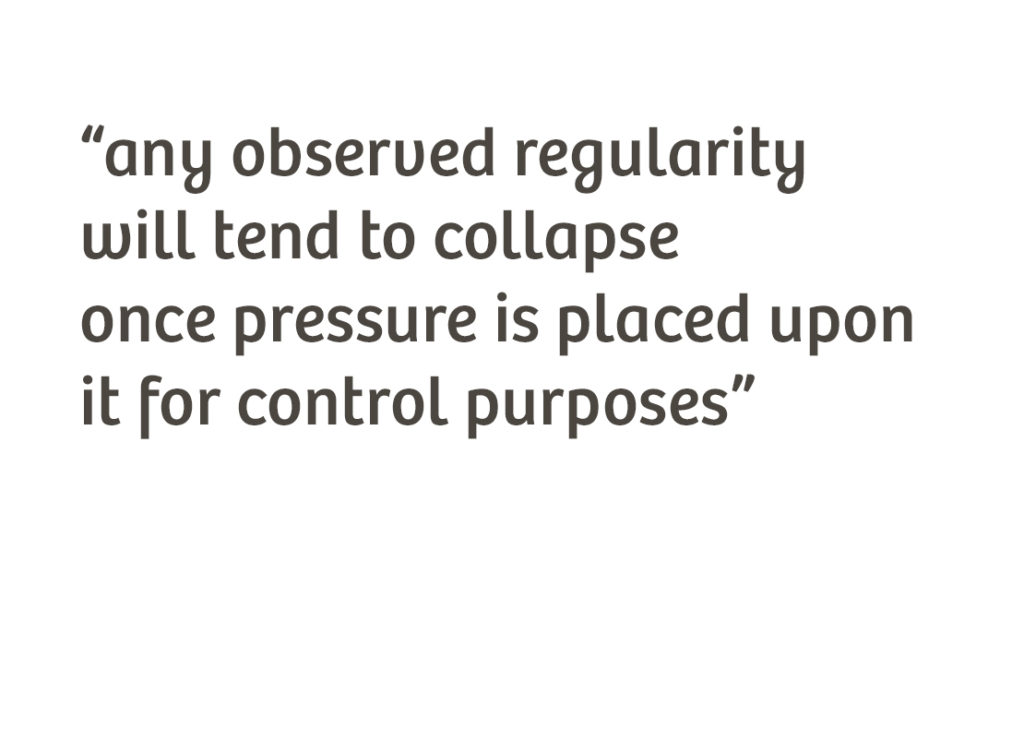What It Is:
Goodhart’s Law states that “When a measure becomes a target, it ceases to be a good measure.” In other words, if a metric or indicator is used as a target for decision-making, individuals and entities will find ways to manipulate or optimize that metric, potentially leading to distorted behavior and outcomes.
Origin of Goodhart’s Law: The law is named after Charles Goodhart, a British economist, and professor. Goodhart articulated this principle in a paper presented to the “Money Study Group” of the London School of Economics in 1975. The original context was the relationship between a financial indicator and the control of money supply.
How to Use It:
Using Goodhart’s Law in Agile Coaching:
- Metric Selection:
- When defining metrics for an Agile software delivery team, consider the possibility of Goodhart’s Law. Be cautious about relying too heavily on a single metric as a target for evaluation, as this may inadvertently drive behavior that undermines the true goals of the team.
- Balanced Metrics:
- Instead of focusing on a single metric, establish a set of balanced metrics that collectively provide a more comprehensive view of team performance and product quality. This can help prevent undue emphasis on a single measure.
- Regularly Reassess Metrics:
- Periodically reassess the relevance and effectiveness of the metrics being used. If a particular metric is being gamed or is no longer providing meaningful insights, it may be necessary to adjust or replace it.
- Encourage Open Communication:
- Foster a culture of open communication where team members feel comfortable discussing challenges and concerns related to metrics. This helps in uncovering unintended consequences of metric-driven decisions.
Understanding Goodhart’s Law is crucial in Agile contexts to ensure that metrics are used as informative tools rather than rigid targets. By being aware of the potential consequences of metric-driven decision-making, Agile teams can make more informed choices and maintain a focus on delivering value.
References:
- Original Paper by Charles Goodhart:
- Read the original paper by Charles Goodhart titled “Problems of Monetary Management: The U.K. Experience” where Goodhart first presented the law.
- Charles Goodhart (1975). “Problems of Monetary Management: The U.K. Experience”. Papers in Monetary Economics.
- Read the original paper by Charles Goodhart titled “Problems of Monetary Management: The U.K. Experience” where Goodhart first presented the law.
- Academic Journals:
- Explore academic journals in economics and related fields for further discussions and analyses of Goodhart’s Law. Subsequent research and studies may provide additional insights.
- Books on Metrics and Decision-Making:
- Books on metrics, performance measurement, and decision-making often discuss Goodhart’s Law in the context of organizational behavior. Look for resources that explore the challenges of using metrics as targets.
- Economic and Financial Literature:
- Publications in the field of economics and financial studies may delve into the historical and theoretical aspects of Goodhart’s Law. These sources can provide a broader understanding of its implications.
- Agile and Lean Literature:
- Agile and Lean literature, especially those focusing on metrics in software development, may discuss Goodhart’s Law and its relevance. Authors often share practical experiences and guidance for avoiding pitfalls related to metrics.
Visit the Agile Coach’s Toolkit for more definitions, models, theorems and stuff.

